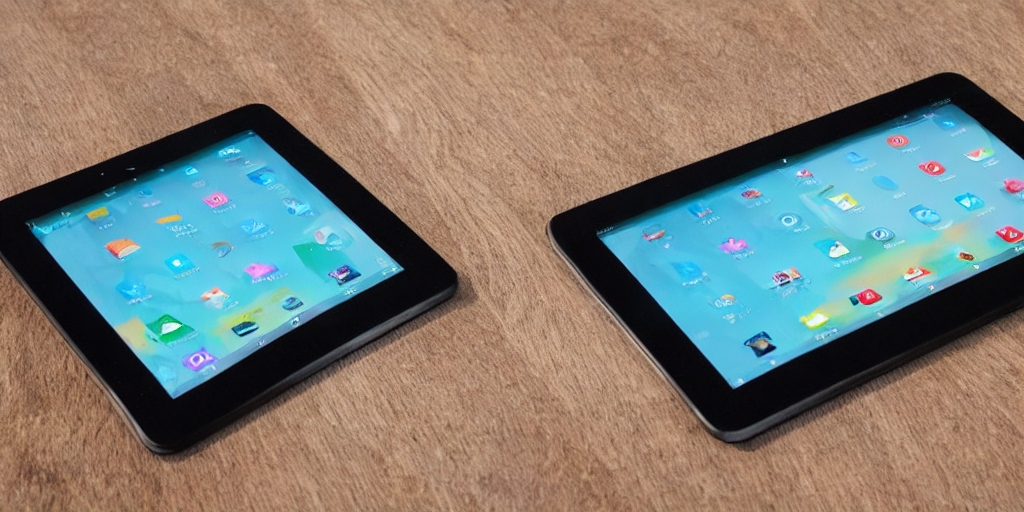The Role of MLCC in Tablet

Multilayer Ceramic Capacitors (MLCCs) play a crucial role in the functionality and performance of tablets. These compact and versatile components are used for various purposes, including power management, signal filtering, and noise suppression. MLCCs are essential for ensuring the reliable operation of tablets and are found in almost every electronic device.

MLCC Applications in Tablets
Multilayer Ceramic Capacitors (MLCCs) are essential components in tablets, contributing to their performance, reliability, and functionality. Here are some key applications of MLCCs in tablets:
Power Management: MLCCs are used in tablets for power distribution and decoupling. They help stabilize the voltage and current levels, ensuring smooth operation of the tablet’s components.
Signal Filtering: MLCCs are used to filter out unwanted noise from signals, ensuring that the signals are clean and free from interference. This is crucial for maintaining signal integrity and data transmission quality in tablets.
Noise Suppression: Tablets are susceptible to electromagnetic interference (EMI) and radio frequency interference (RFI) from various sources. MLCCs help suppress this interference, ensuring that the tablet’s performance is not affected.
Battery Management: MLCCs are used in tablet batteries for charge and discharge management. They help regulate the flow of current, ensuring safe and efficient charging and discharging of the battery.
Display and Touchscreen: MLCCs are used in the display and touchscreen components of tablets. They help in the control and stabilization of the display’s backlighting and touchscreen sensitivity.
Audio Systems: MLCCs are used in the audio systems of tablets for noise filtering and signal conditioning. They help improve the audio quality and reduce background noise.
Memory and Storage: MLCCs are used in the memory and storage components of tablets. They help in the efficient transfer and storage of data, ensuring smooth operation of the tablet.
Advantages of MLCCs in Tablets
Multilayer Ceramic Capacitors (MLCCs) offer several advantages in tablet design, making them essential components in modern tablets. Here are some key advantages of MLCCs in tablets:
Compact Size: MLCCs are small and lightweight, allowing for high component density in tablets. This compact size is crucial for the slim and lightweight design of modern tablets.
High Capacitance: MLCCs offer high capacitance values relative to their size, providing efficient power management and signal filtering in tablets. This high capacitance helps in meeting the power requirements of the tablet’s components.
Reliability: MLCCs are known for their reliability and long lifespan, ensuring the durability of tablets. They can withstand temperature fluctuations, mechanical stress, and other environmental factors, making them ideal for use in tablets.
High Frequency Performance: MLCCs can operate efficiently at high frequencies, supporting the high-speed data transfer and processing requirements of tablets. This high-frequency performance is crucial for the smooth operation of tablets.
Low ESR and ESL: MLCCs have low equivalent series resistance (ESR) and equivalent series inductance (ESL), ensuring efficient power delivery and signal integrity in tablets. This low ESR and ESL contribute to the overall performance and reliability of tablets.
Cost-Effectiveness: MLCCs are cost-effective compared to other types of capacitors, making them an attractive choice for tablet manufacturers. Their high performance and reliability justify their cost in tablet design.
Wide Range of Capacitance and Voltage Ratings: MLCCs are available in a wide range of capacitance and voltage ratings, allowing for flexibility in design and meeting the specific requirements of tablets.

MLCC Trends in Tablet Design
Multilayer Ceramic Capacitors (MLCCs) are essential components in tablet design, and their usage continues to evolve with advancements in technology and consumer demands. Here are some trends in MLCC usage in tablet design:
Miniaturization: As tablets become thinner and lighter, there is a growing demand for smaller MLCCs that can fit into tight spaces. Manufacturers are developing smaller MLCCs with higher capacitance values to meet these requirements.
Higher Capacitance Values: With increasing power demands and higher processing speeds in tablets, there is a need for MLCCs with higher capacitance values. Manufacturers are developing MLCCs with higher capacitance values to meet these power requirements.
Multi-Layer Structures: Multi-layer ceramic capacitors offer higher capacitance values in a smaller footprint compared to single-layer capacitors. Tablets are increasingly using multi-layer structures to maximize space and improve efficiency.
Improved Performance at High Frequencies: Tablets require MLCCs that can operate efficiently at high frequencies to support faster data transfer rates and processing speeds. Manufacturers are developing MLCCs with improved performance at high frequencies to meet these demands.
Temperature Stability: MLCCs used in tablets need to operate reliably over a wide temperature range. Manufacturers are developing MLCCs with improved temperature stability to ensure consistent performance in varying environmental conditions.
Reliability and Durability: Tablets are subjected to various environmental factors, such as temperature fluctuations and mechanical stress. MLCCs with enhanced reliability and durability are being developed to ensure long-term performance in tablets.
Environmental Sustainability: There is a growing emphasis on environmental sustainability in electronics manufacturing. Manufacturers are developing eco-friendly MLCCs that are free from harmful substances and can be easily recycled.
